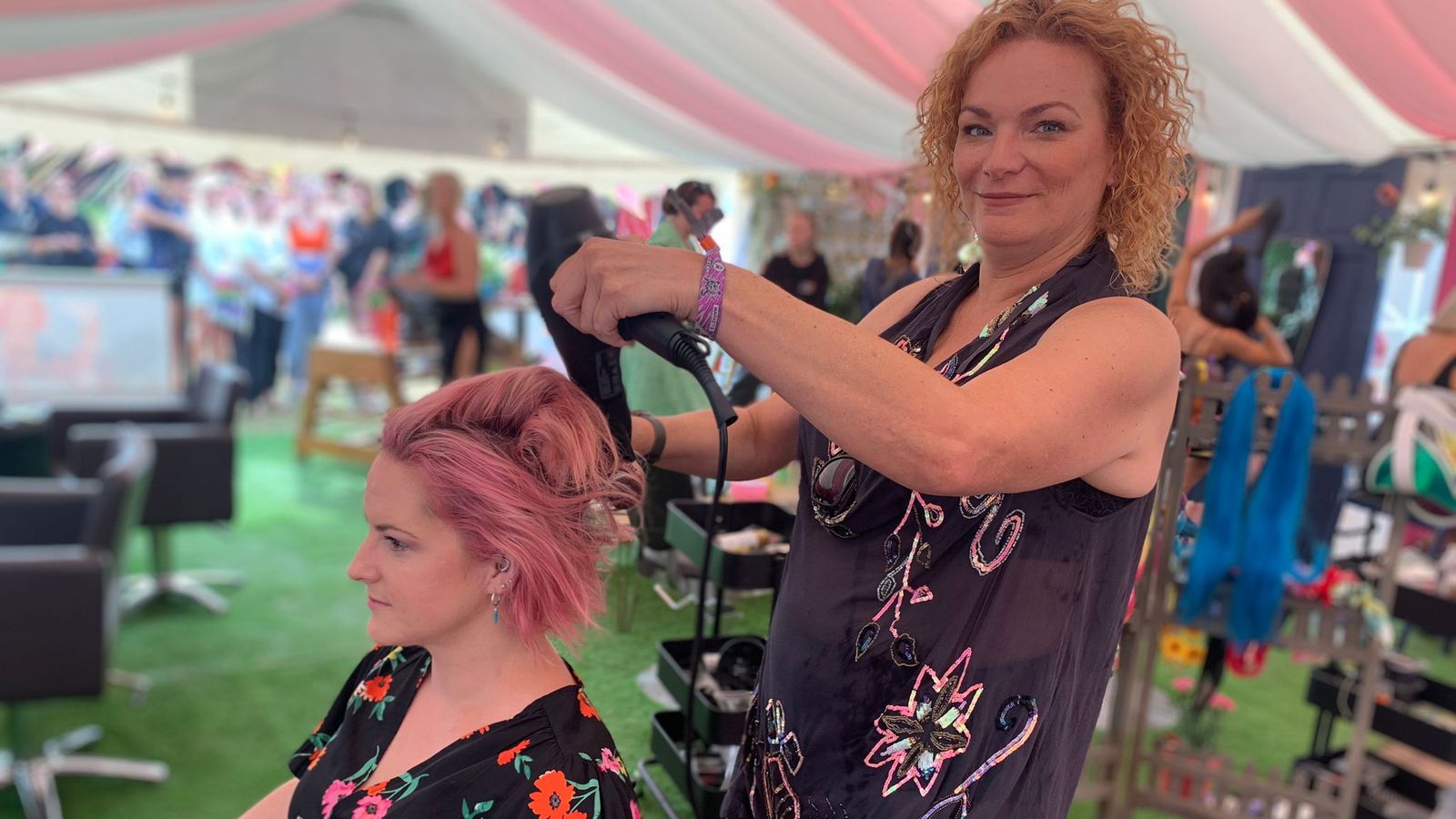It turns out living in the South is a great way to find a pretty sweet deal on an expensive electric Harley-Davidson motorcycle, especially when H-D spins off LiveWire as its own EV brand. I’ve read and watched Micah’s excellent and thorough LiveWire review countless times since learning to ride, and I’m positive it and Long Way Up are the reason I’m a LiveWire owner now.
I started riding as an escape at the beginning of lockdown in the US last spring, and I’ve been writing about Apple and technology at 9to5Mac since 2013. Always living with the newest iPhones and Macs (before you can buy them sometimes) has turned me into a technology critic. Naturally, that’s a major part of how I evaluate Harley’s electric motorcycle.
A roller coaster you can buy
I’ll start with the whole EV thing. It’s absolutely addictive … like owning your own personal roller coaster. It’s sharp. It’s sexy. It’s anything but discreet despite being quieter than gas bikes. Acceleration is the magic here, with 0-60 mph in 3 seconds and reaching interstate speeds a few seconds later.
I was 29 when I bought my first bike, a 2018 Honda Rebel 300, and it blew me away for the first several months. My very first motorcycle experience was getting the one I’d just bought home safely, and I wasn’t even sure how to start it. 8,500 miles later, I was more than ready to upgrade to something with more oomph and a top speed over 85.
And upgrade I did … to a Harley-Davidson Softail Fat Bob. I owned it for all of four days before test driving a LiveWire for what I thought would be the only time ever. I took delivery of an Orange Fuse LiveWire the very next day.
My guess is the Harley dealer in south Louisiana knew it could sell a gas bike, but it hadn’t managed to sell its EV inventory. At first, the trade-in offer was impossible to accept; then, it was impossible to pass up.
My first EV
And thus begins my EV journey (aside from renting a Tesla Model 3 a few times).
It only took a few days of riding the LiveWire to become well-versed in charging lingo like J1772 and CCS, and apps like PlugShare, ChargePoint, and Electrify America are as essential as A Better Routeplanner.
Before owning the LiveWire, I actually had no plan for how I would charge it. Fortunately, the figure-it-out-later approach was just fine. The bike is super easy to charge from any three-prong outlet, and I’ve discovered a dozen public charging stations (including three DC chargers that take the bring from 0% to 100% in under an hour) around where I live in Biloxi, Mississippi.
I’m averaging around 130 miles per charge so far, and I can reliably fill up overnight from 0 to 100% battery. In practice, I’m only charging once a week or so since all the places I commute to are within 15 miles of my home. Battery life is also fine for just enjoying a leisure ride for a few hours. I was nervous about this before buying, but fortunately, the battery supports my favorite pastime.
For a thorough electric motorcycle review of the Harley-Davidson LiveWire, I’ll point you once more to Micah Toll’s fantastic write-up and video review from last spring.
A tech perspective
I can’t speak highly enough about the motorcycle and EV experience part of the LiveWire. Seriously, I just love that turbine sound when riding and never having to shift gears when commuting around town.
The technology that makes the Harley-Davidson LiveWire and all-electric bikes possible is just astonishing to me. It feels like driving a motorbike from the future, which is very appropriate for a forward-thinking tech person like me.
What’s less impressive is the smartness of the LiveWire. Don’t get me wrong. It’s a teched-out motorbike compared to most gas bikes on the street, but it feels years behind iPhones and iPads of recent years.
H-D Connect
Panasonic powers the onboard cellular connection that drives the H-D Connect experience. Harley-Davidson introduced this connected feature to select touring motorcycles and its EV, but H-D Connect now only exists on the LiveWire.
I’ve been working with my dealer to actually activate H-D Connect on my LiveWire, so I haven’t been able to use it, but I can evaluate the features it promises.
Similar to Tesla’s app, H-D Connect lets you remotely monitor charging status/range and receive alerts if charging is interrupted. LiveWire owners are vocal about how limited this feature is, however, with feature requests like pausing charging at 80% or having charging modes for daily commutes versus longer rides.
The app also features motorcycle navigation from Harley-Davidson. Directions can appear on the bike’s display when paired over Bluetooth while using the app for routes.
Being limited to the H-D Connect app for on-screen navigation is a huge limit compared to infotainment systems like CarPlay and Android Auto, which can be found on some legacy bikes. I would much prefer to see directions mirrored from my iPhone using Apple Maps, Google Maps, Waze, or even motorcycle-specific apps like Rever that work with CarPlay.
H-D Connect can also be used to remotely locate a stolen LiveWire. However, the feature is only to assist authorities and Harley-Davidson in tracking down a stolen machine and not finding where you parked.
Smartphone connectivity
As required by H-D Connect, you can pair your iPhone or Android phone to the Harley-Davidson LiveWire. You won’t get on-screen navigation from your smartphone’s maps app, but you can see and control media playback. There’s a useful audio toggle on the left side of the handlebar that allows you to play/pause, skip/rewind, and increase/decrease volume.
You can also optionally see media playback information on the LiveWire screen when your phone is paired with the bike. The typography choice and system layout make artist names and song titles rather cramped on the arguably small 4.3-inch touchscreen, but it works.
After a month of riding, however, I’ve found that the bike and phone rarely connect over Bluetooth automatically, and the payoff isn’t worth manually pairing each time. That’s also because, despite having a dedicated voice control button, you can’t prompt Siri on the iPhone from the bike. If not for the helpful LiveWire user forums, I would have thought mine was borked.
What I, and other LiveWire riders, do is manage audio playback from a Bluetooth-connected Sena headset. The connection works every time, and Siri can be activated with Sena’s button.
Semi-modern display
Frankly, the display itself doesn’t feel very modern despite the bike being the nicest electric motorcycle on the market. I’ve seen more modern screens and systems on cheaper gas bikes. In short, a motorbike priced like the LiveWire falls a bit short in the onboard tech department for me. Here’s to hoping for an upgraded experience on future LiveWire-branded machines.
But the truth is that you don’t buy the LiveWire for the technology experience. You buy it because it’s a freakin’ incredible electric motorcycle. Seriously, it’s a dream for EV enthusiasts who are into two-wheeled modes of transportation.
Despite the lackluster display and on-screen system of the LiveWire, I’m more than content with the bike overall. My previous bikes didn’t feature connectivity that mirrored what’s found in cars these days, and I’m plenty satisfied with mounting my iPhone to the handlebars and charging it from the LiveWire’s built-in USB-C port.
What’s to come
I do wish the future holds a more robust onboard system for the LiveWire. An electric motorcycle is just begging to have a modern app component more like what Zero offers and demos for its electric bikes.
And while the USB-C port is a modern touch over USB-A ports, the inability to check for software updates from the bike’s screen also feels dated. Staying updated on new operating system releases with a physically connected hard drive just ain’t the future.
My biggest hope for LiveWire as its own EV brand spun out from Harley-Davidson is that the LiveWire model and future EV bikes under it will embrace consumer technology in a much bigger way. For now, LiveWire is a brilliant preview of the future of motorcycles with onboard tech that leaves much to be desired. Next on my list? I’m very much eyeing the Ford F-150 Lightning for moving the LiveWire between states.
Subscribe to Electrek on YouTube for exclusive videos and subscribe to the podcast.

